Forsy’s
Flagship Project
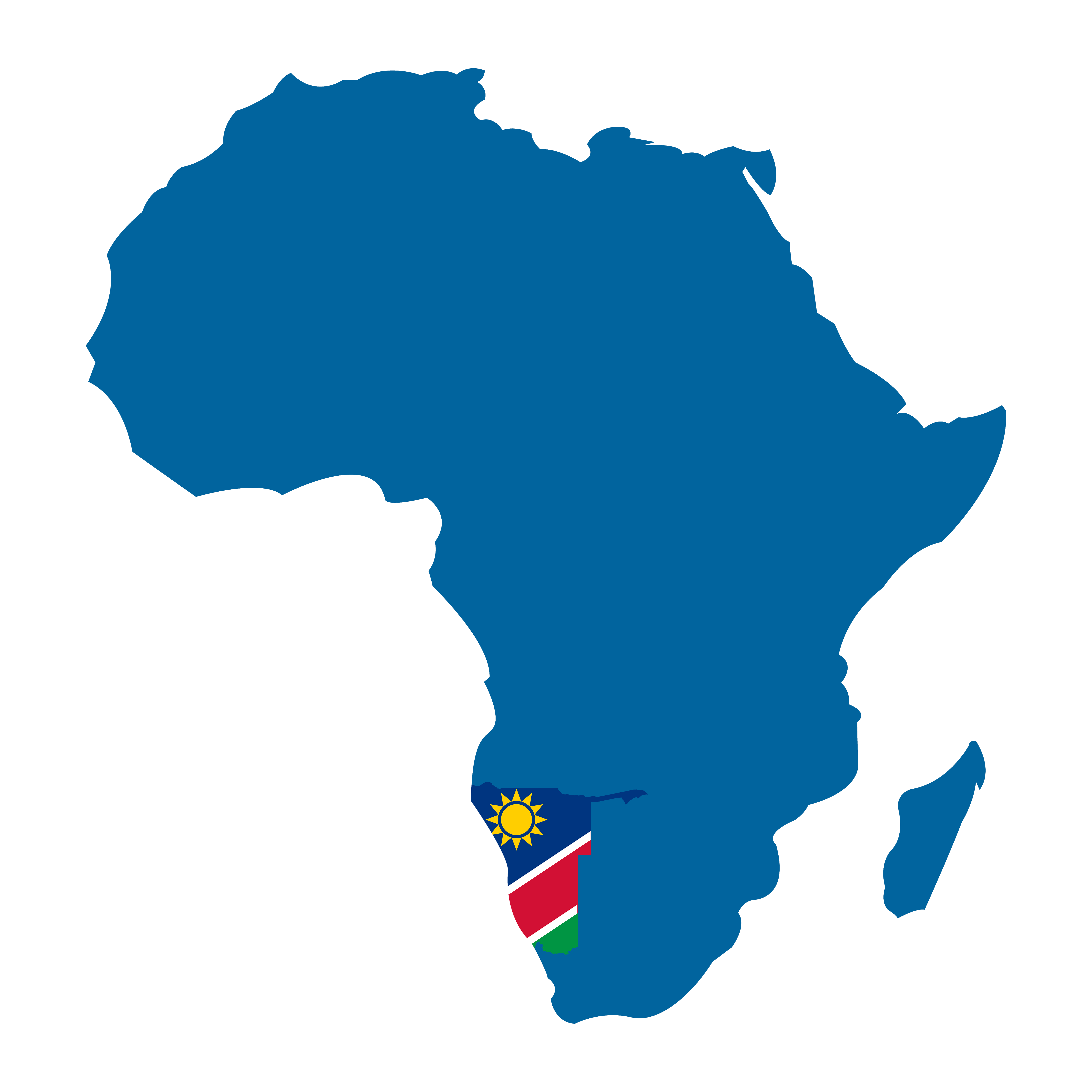
US$622.6M
NPV pre-tax
91m/lb
Uranium Production
US$1,751M
Operating Cash Flow
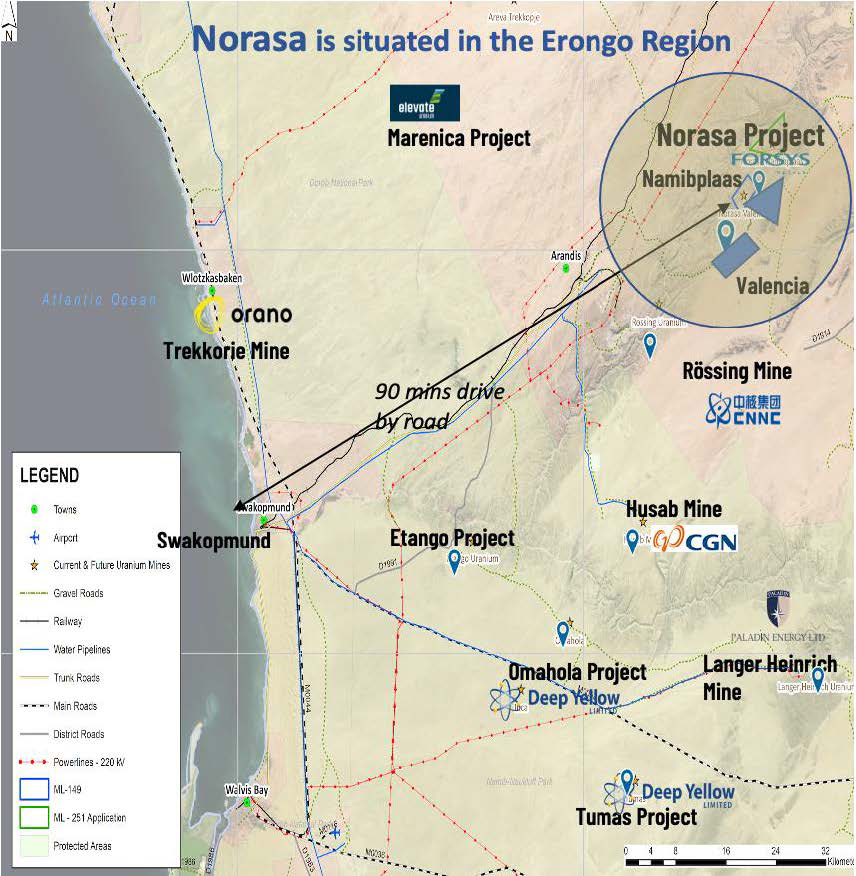
Property Description and Location
The Company’s flagship project is Norasa which includes the wholly owned Valencia project (ML 149) which has a 25 year mining licence and a 100% interest in the Namibplaas project (EPL 3638), which is located 7.5 km north east of Valencia. Both projects have NI 43-101 compliant uranium resources and reserves. The properties are located in the Republic of Namibia, located approximately 75 km south-west of the town of Usakos in central-west Namibia and together are known as the Norasa Uranium Project.
Valencia is situated on the farm “Valencia 122”, which is located approximately 75km north-east of the town of Swakopmund in central-west Namibia, covering an area of 735.6 ha and is registered in the name of Valencia Uranium (Pty) Ltd (“Valencia Uranium”). ML 149 was converted from EPL 1496 on June 23, 2008 and is valid for 25 years from date of issue by the Namibian Ministry of Mines and Energy (“MME”) and is renewable.
The entire Valencia mineral licence area is located on privately held farmland. As required by law, an agreement must be entered into between a mineral licence holder and the landowner to allow exploration activities. In order to progress a project to mine development, a compensation agreement is required to offset the effects of the operation. In April 2009, Valencia Uranium entered into a compensation agreement with the owner of the farm Valencia 122, in relation to Section 52 of the Minerals Act of 1992, granting Valencia Uranium unrestricted use of the land on and around ML 149 covering an area of 3,327 hectares. A similar agreement was reached with the owners of the neighboring 594 hectare farm “Bloemhof 109”, located to the south, for the construction of additional infrastructure and for primary access to the Valencia site.
These agreements facilitated planning for the necessary infrastructure required to support mining operations. This infrastructure has been approved by the MME as the operation’s accessory works and includes inter alia the main pit, waste dumps, tailings dump, pipeline, power lines, roads, process plant, explosive magazines, etc. The construction camp / operations village have also been approved. Environmental clearance was obtained for all operations relating to Valencia, although some amendments to the Valencia plan will be required to include the Valencia satellite pit and relocation of some of the mining infrastructure. All amendment issues will be covered in the updated EIA / EMP.
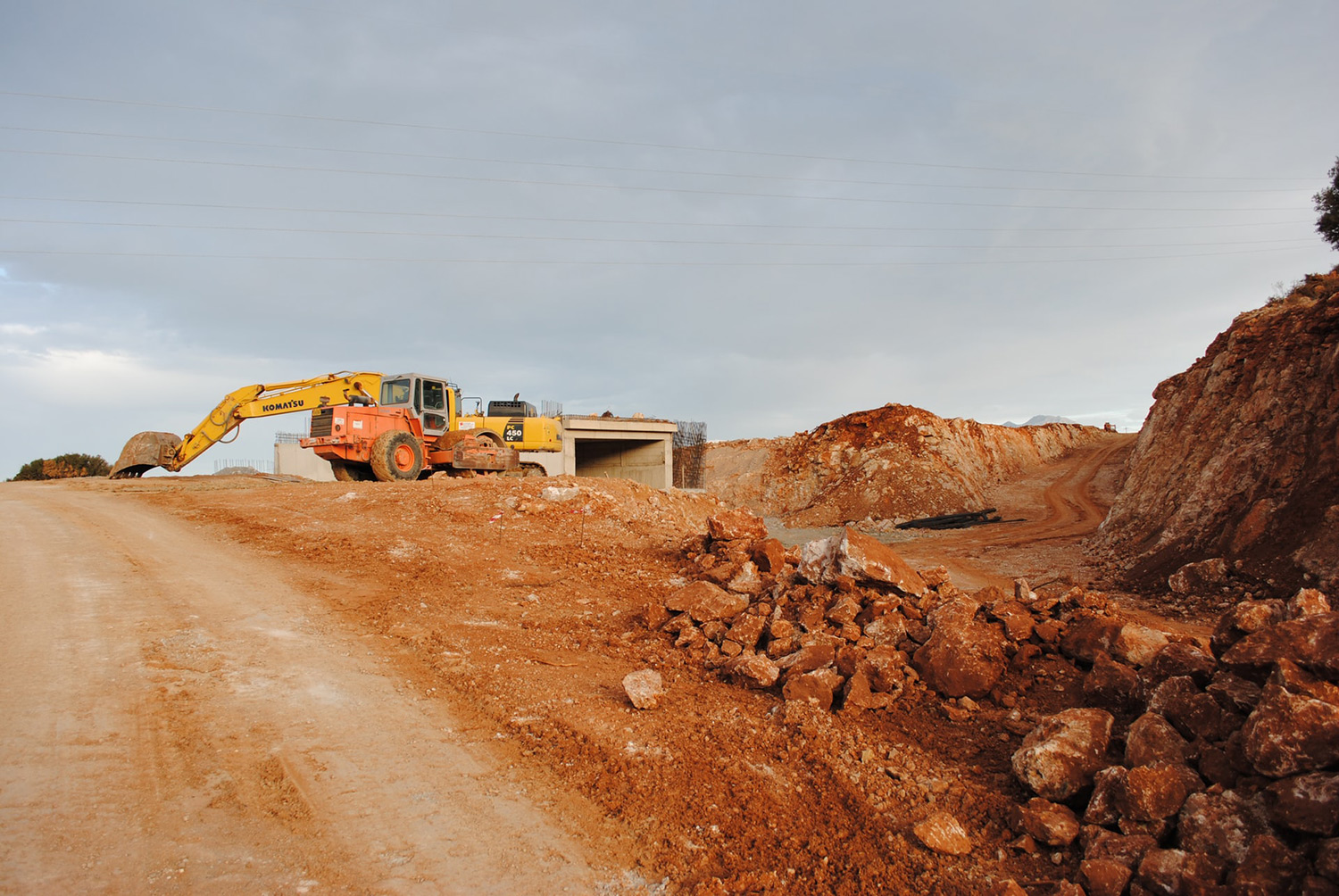
Namibplaas is located 4.5km northeast of the Valencia deposit on the farm “Namibplaas 93” with a total surface area of 1,269 ha. Forsys is actively engaged with the Ministry of Mines and Energy (MME) to renew its Exclusive Prospecting Licence (EPL 3638) for further pit optimization work at the Namibplaas site. This renewal is crucial for gathering the necessary data to secure a full Mining Licence (ML-251 in application) at Namibplaas.
Earlier in the year, Forsys successfully renewed its Environmental Clearance Certificate (ECC) from the Ministry of Environment, Forestry and Tourism This three-year ECC is vital for ensuring compliance with environmental regulations, allowing the Company to advance its development plans for the Norasa project. The ECC renewal process evaluated the Company’s environmental management practices, including waste management, emissions controls, biodiversity protection, and community engagement, among other factors.
The environmental studies for Namibplaas are underway, with baseline monitoring of groundwater, air quality, noise studies, archeology, flora & fauna and soils already completed. This work is being done as part of Norasa and is taking the form of an amendment to the original Valencia EIA/EMP, a process that has been approved by the Ministry of Environment and Tourism.
There are no historical environmental liabilities for either the Valencia or Namibplaas properties.
2024 Mineral Resource Estimate (MRE)
The Company has undertaken a comprehensive review and update of all of the parameters for a Mineral Resource Estimate (“MRE”) for the Norasa project using recent drill results together with the 2005-2011 previous MRE data. Confirmatory and geotechnical drilling, in conjunction with new survey information, including topographic surveys, down-the-hole optical televiewer surveys, trajectory surveys, and downhole gamma probe surveys, were used as inputs for mineral resource modelling. Re-interpretation of the previous database utilising all available data and modern estimation approaches has improved the definition of the MRE to more confidently support mine planning. This study, enhanced by an integrated and expanded drill program targeting existing and new land areas together with a robust work plan of optimisation process testing and modelling, will help reinforce the upside potential of the Norasa project.
Results have been reported from recent remodelling of previous (2005-2011) drilling and recent 2023 drilling results. The Mineral Resources are reported within US$120/lb U3O8 pit shells, with a cut-off grade of 40 ppm U3O8 for each of the deposits at Valencia Main and East, (“Valencia”), under Mining Licence (ML-149) and US$120/lb U3O8 at 40 ppm U3O8 cutoff at Namibplaas (“Namibplaas”) under EPL-3638. The MRE are summaried as follows:

| Revenue and Cash Flow | Life of Mine | First 5 Years |
|---|---|---|
| Average U3O8 Base Price (US$/lb U3O8) | 65 | 65 |
| Net Revenue (US$M) | 5056.8 | 1678 |
| Operating cash flow (US$M) | 1751.1 | 440.2 |
| Net cash flow after tax (US$M) | 1007.6 | 161 |
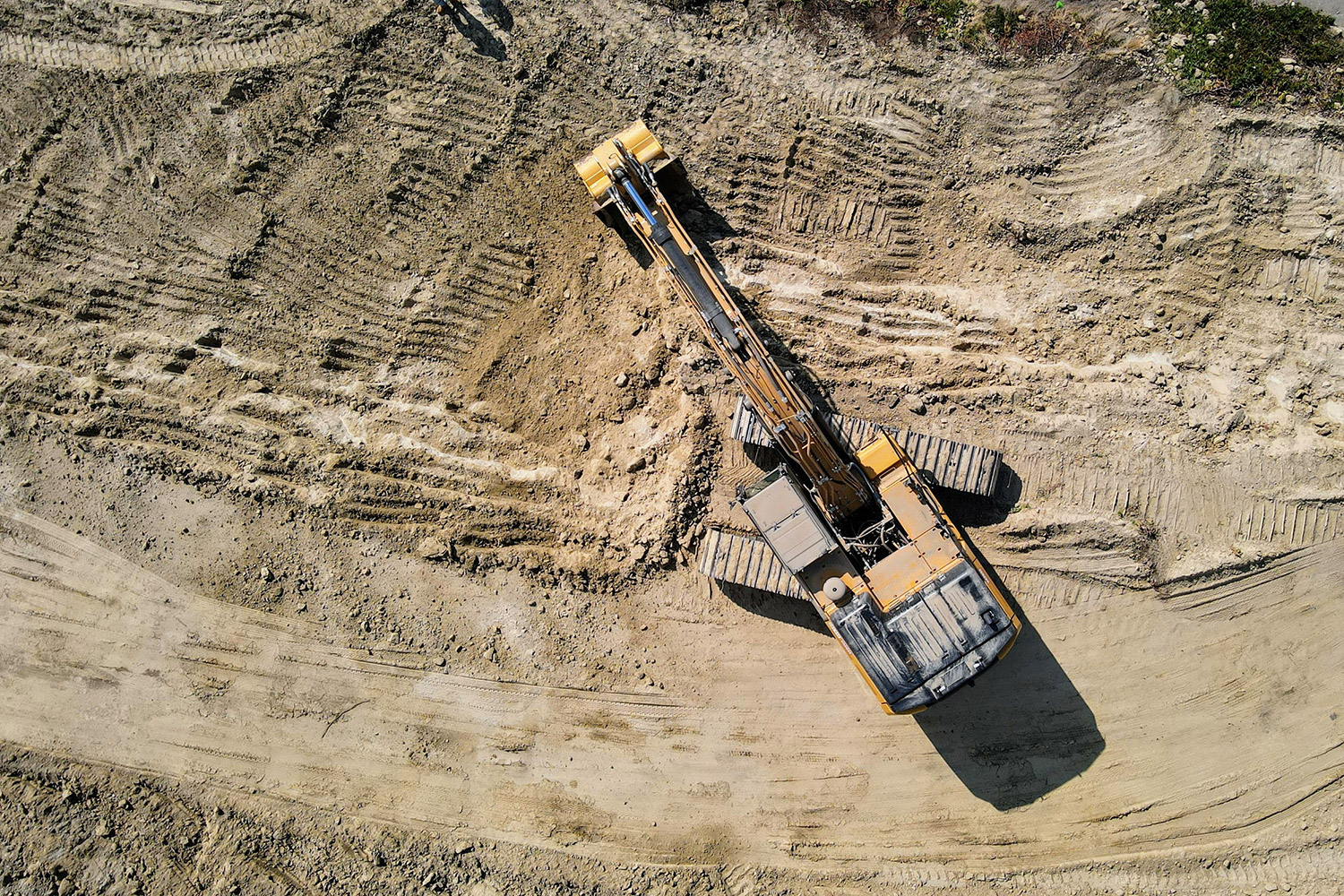
Infrastructure
Norasa has received NamWater’s (Namibia’s national bulk water utility) assurance of a supply of water during the potential construction phase of the project.
The nearest power off-take point that can supply Norasa is the Khan substation, located at Ebony, 26km north of the project site. However, the direct route is very rugged through the Khan Valley and tributaries and an alternate indirect transmission route of nearly 30km has been laid out by NamPower. The Khan substation has recently been upgraded and expanded. NamPower met the cost of the new substation although a new bay for Norasa will be at the mine’s expense, as will be the cost of the transmission line to the mine.
The preferred route to access the mine was determined to be across the Khan River, using tributary valleys. This route links the mine to the B2 highway, 12km northeast of Rössing. The total length of this new road is approximately 26km. Construction of the industrial grade gravel road was completed in mid-2010. Some of the internal service roads were also constructed.
Infrastructure in Nambia has been ranked No 1 in Africa (Fraser Institute report 4):
Various options for ground water are being evaluated in close proximity to the project to supply water during construction phase. In addition, Water supply for the mine and mineral processing operations will be sourced from one or a combination of the three potential sources listed below:
- Water sourced from the Namwater pipeline (B2 highway): The source of this water is the Orano Resources Namibia plant located at Wlotzkasbaken, approximately 30 km north of Swakopmund. The closest bulk water supply point is the Rössing mine reservoirs, located 24 km to the WSW. Installation of a 31 km long pipeline to run through the Khan River to the site. Upgrading of the pipeline and pumping system will be necessary.
- Ground Water: A paleochannel aquifer is present, southeast of the Valencia site, between the Chuos Mountains and mountains south of the Khan River. Further investigation on this aquifer as part of the geohydrological assessment is scheduled to evaluate this aquifer’s potential.
- Khan River: There is also the option to abstract water from the Khan River Alluvium Aquifer or potential for the development of a long-standing plan to build a dam on the Khan River system. The hydrological and geohydrological assessment in the EIA will determine the viability of this option.The nearest power off-take point that can supply Norasa is the Khan substation, located at Ebony, 26km north of the mine. The direct route is very rugged through the Khan Valley and tributaries and an alternate indirect transmission route of nearly 30km has been laid out by NamPower. The Khan substation has recently been upgraded and expanded. NamPower met the cost of the new substation although a new bay for Norasa will be at the mine’s expense, as will be the cost of the transmission line to the mine.
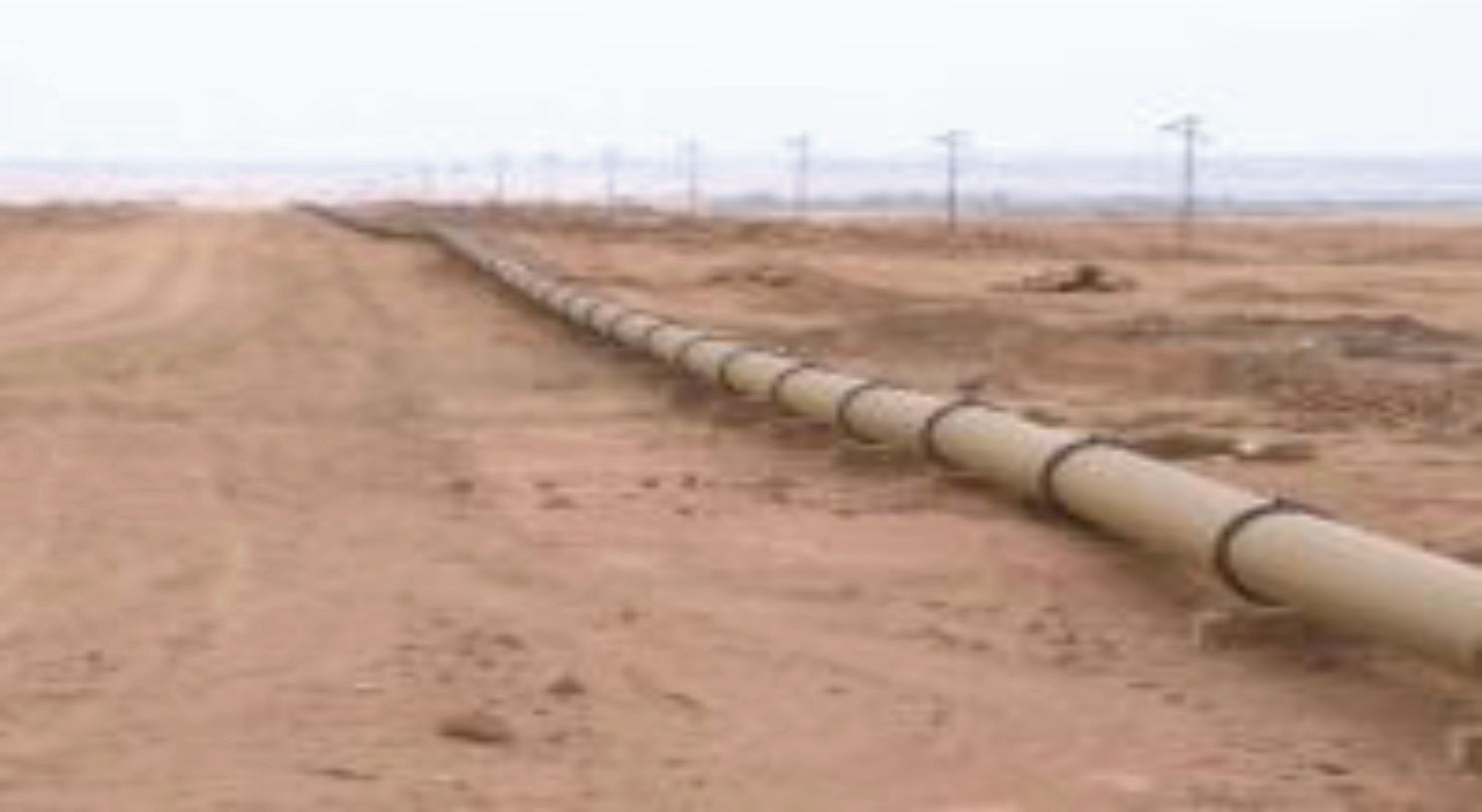
Water Supply
- Short and medium term supply of water from Areva’s desalination plant (gov’t acquiring)
- NamWater’s own desalination plant to provide long term requirements of up to 20 million cubic metres per annum

Power Supply
- Namibia signed electricity import agreement with Mozambique in 2013 for 122MW
- NamPower to construct its own 800MW gas power station in cooperation with Zambian power company

Roads
- 26 km of new access road linking Valencia mine to highway completed in mid 2010. Some internal service roads have also been constructed

Buildings
- Semi-permanent village will be established 8 km from process plant

